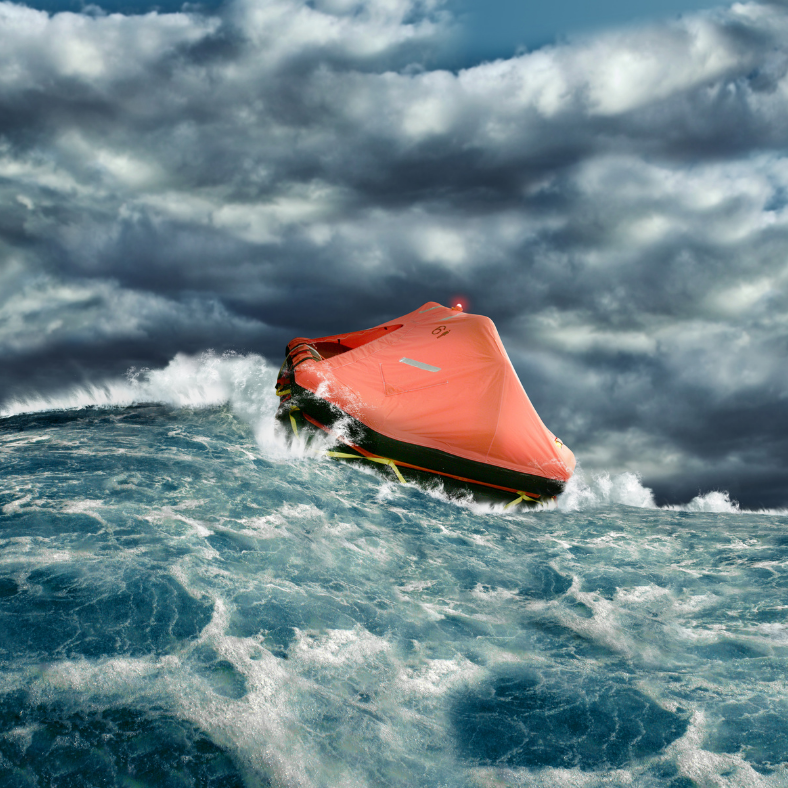LIFE RAFTS: A GUIDE FOR BEGINNERS
Are you thinking of going on longer boat trips? Then, depending on your local regulations, you will likely need to get a life raft. In this article, we have summed up all the basics you need to know about life rafts. Hopefully, it will help you make a decision on how to equip your boat.
WHY BUY A LIFE RAFT?
Life rafts are platforms designed to keep boaters out of the water while they wait to be rescued. It’s essential safety gear to have onboard, especially offshore. They provide you with shelter in case of sinking or fire.
However, emergency rafts are your very last option in case of an emergency. Don’t rush into the raft unless you are absolutely sure that your vessel is lost. A boat is much more seaworthy than an inflatable raft, so if you can stay on board, do it. You’ll have more chances of survival.
WHAT ARE THE MAIN TYPES OF LIFE RAFTS?
Life rafts are labeled based on their intended use as:
Coastal
Offshore
Ocean-going
Coastal life rafts have single-inflation tubes and are used when there is a high likelihood of being rescued within one day. The grab bag included in these typically contains flares, signaling devices, and paddles.
Offshore life rafts have two buoyancy tubes (one set acts as a backup) and can help you survive for four to five days. There are food and water in the grab bag.
Ocean-going life rafts allow you to survive for up to 30 days. The grab bag will usually include extra survival gear, such as a sea anchor, as well as more food and water.
HOW DO YOU DEPLOY A LIFE RAFT FROM A RECREATIONAL BOAT?
You can launch your emergency raft with these simple steps:
Make sure the painter (firing line) is well-secured to a strong point on board your boat
Free the life raft from its lashings
Throw the life raft into the water
Make sure it is right side up
Take hold of the painter (firing line) and pull it in until you feel resistance
Give the painter a hard pull to inflate the raft
Don’t let go of the line.
If you install an HRU unit (hydrostatic release unit) onto the raft, it will automatically inflate once the unit is under 4 meters (13 feet) of water.
How do you board a life raft from a small boat?
The safest way to board an emergency raft is to do it from the water. For this reason, the fittest and strongest crew member should board it first and carry a throwable line to help other people get on board.
Getting directly into the raft from a rocking boat is very dangerous. Always make sure the raft is far enough from the boat so that it can’t get crushed.
WHERE DO YOU STORE A LIFE RAFT?
It depends on the container it comes in. If it’s enclosed in a canister, you can mount it on deck or on the pushpit rail, as it can withstand spray. Make sure it’s raised off the deck to allow for any water to get out. It will be easy to retrieve and activate.
If the raft is enfolded in a soft valise, you will need to store it in a dry place, such as locker. Don’t stow anything on top of it, as it could damage the raft.
HOW LONG DOES A LIFE RAFT LAST?
Most emergency rafts last up to 15 years if regularly serviced. However, if you often go offshore on long trips and ocean passages, you’ll want to replace your raft more frequently.
CAN A LIFE RAFT BE REUSED?
Yes, you can extend the life of your raft by taking it to an authorised centre for servicing. Most life rafts need servicing every three years. The raft will be thoroughly checked and inspected, as well as inflated. The centre will also replace any parts that no longer work or are damaged. Each time you take your life raft in for servicing, you will get a recertification sticker.
If you misfire the life raft, take it to a service station, so they can repack it for you and check that everything is in order.
WHICH LIFE RAFT SHOULD YOU GET?
While the specific type of life raft you need to invest in depends on your local regulations, there are some basic principles that help you choose.
The buoyancy of a life raft depends on the number of people on board, so you’ll have to buy one that fits your crew. If you exceed or do not reach the weight range of the raft, you risk capsizing. Moreover, you’d struggle to heat a raft that’s too big, in case the temperature drops. Finally, the larger the capacity of the raft, the heavier it will be. It can be hard to launch a very heavy raft.
Remember: life raft regulations vary across the globe. Make sure you look up your country’s legislation before you make a decision on which life raft to buy.



